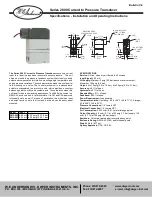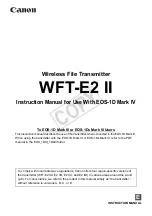
INTRODUCTION
WBPEEUI110504A0
6 - 1
SECTION 6 - TROUBLESHOOTING
INTRODUCTION
If the Type PTSD Platinum Standard Smart Pressure Trans-
mitter cannot implement a command, the Type STT terminal is
prompted. Pressing the STATUS key on the Type STT terminal
causes it to display an error message relating to the existing
problem. If an error occurs, but is corrected before the
Type STT terminal is connected (such as a temporary over-
pressure condition), the error is stored and is indicated once
the terminal is connected and the STATUS key is pressed.
Table
shows these error messages, the probable cause of
the malfunction and the recommended corrective action.
Table
lists possible output problems and the recom-
mended corrective action. A troubleshooting flowchart appears
in Figures
, and
.
NOTE: More than one error can be present on one transmitter; how-
ever, only one error at a time can be displayed on the Type STT ter-
minal. As such, error messages on the Type STT terminal are based
on a priority structure. The error holding the most significance to the
system will be displayed first and any others that follow will appear
according to their rank in the priority structure.
ERROR MESSAGES AND CORRECTIVE ACTION
This section contains all of the possible error messages per-
taining to the Type PTSD pressure transmitter that can dis-
play on the Type STT terminal. Table
lists the messages in
alphabetical order and has four columns:
1. The
Message
column lists the errors (alphabetically)
exactly as they appear on the smart terminal.
2. The
Fail Mode
column indicates if the error causes the
Type PTSD pressure transmitter to enter the fail mode. Refer
to
Startup and Failure Conditions
in Section 5 for more
information.
3. The
Probable Cause
column provides a brief explanation
of the cause of the error.
4. The
Corrective Action
column lists corrective actions to
take for each error.
Содержание Platinum standard Series
Страница 1: ......
















































